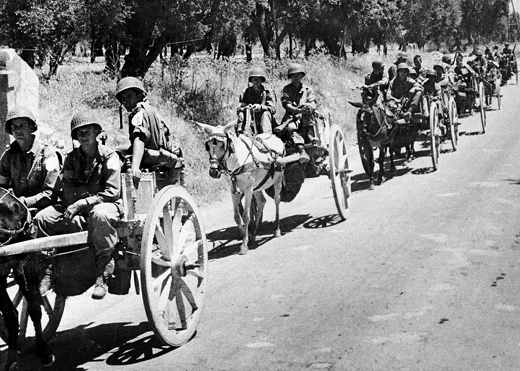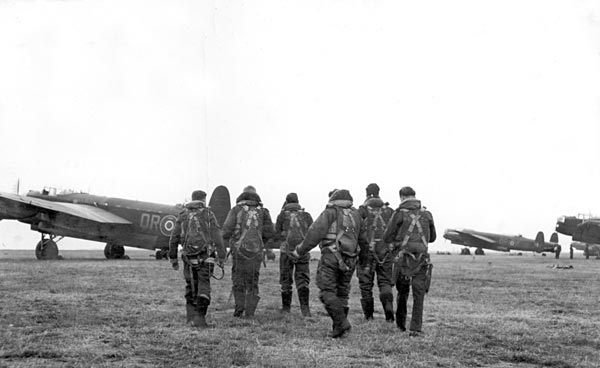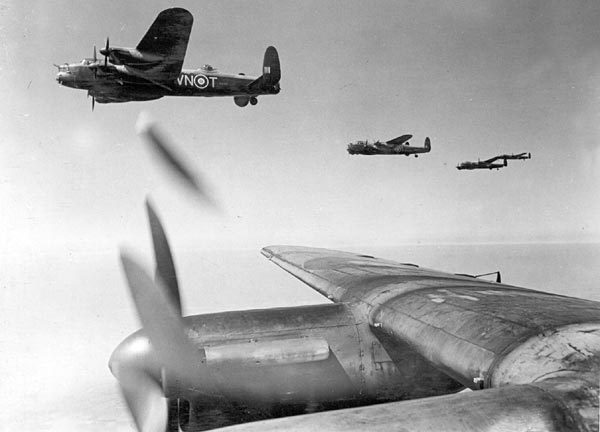Air Operations, Aleutians
1 28th Composite Bomb Group reconnaissance B-17 bombs Kiska.
[Air Operations, Bismarcks
- V Bomber Command B-25s, B-26s, and 1 B-24 attack Japanese Army headquarters and barges at Natamo, barges in Borgen Bay, and shipping off Cape Gloucester.
- 3rd Light Bomb Group B-25s finish off a beached Japanese destroyer that had been left in sinking condition off Cape Gloucester the day before.
- A P-38 with the 8th Fighter Groupís 80th Fighter Squadron downs 1 Ki-46 'Dinah' reconnaissance aircraft over Cape Gloucester at 1040 hours.
Air Operations, CBI
BURMA- 341st Medium Bomb Group B-25s organized in two waves attack a bridge spanning the Mu River at Monywa.
- 18 308th Heavy Bomb Group B-24s escorted by 23rd Fighter Group P-40s and 449th Fighter Squadron P-38s, attack port facilities and dockyards at Hong Kong and Kowloon. A 449th Fighter Squadron P-38t downs an A6M Zero over Hong Kong during the afternoon.
- 23 Japanese bombers with 30 escort fighters attack the airfield at Hengyang. A 16th Fighter Squadron P-40 downs an A6M Zero over Hengyang.
Air Operations, Europe
RAF BOMBER COMMANDEvening Ops:
- The Battle of Hamburg continues with 777 aircraft making a raid on the city. Included in this total are 340 Lancasters, 244 Halifaxes, 119 Stirlings, 70 Wellingtons and 4 Mosquitos.
- The marking for this raid is again all by H2S. The plan is to approach Hamburg from almost due north and hit the northern and northeastern districts which had thus far not been hit. The Pathfinders come in more than 2 miles 2 far to the east and mark an area just south of the devastated firestorm area. The Main Force bombing 'creeps back' about 4 miles through the devastated area, but then produces a very heavy bombing in the Wandsbek and Barmbek districts and parts of the Uhlenhorst and Winterhude districts. These are all residential areas. There is a widespread fire area, but no firestorm, which the exhausted Hamburg fire units can do little to check.
- 11 Halifaxes, 11 Lancasters, 4 Stirlings and 2 Wellingtons are lost.
|
|
- 4 Mosquitos are sent to Düsseldorf, 6 Wellingtons lay mines in the Elbe River, 9 Lancasters of 617 Squadron drop leaflets over Italian cities and there are 3 OTU sorties.
- There are no losses.
FRANCE:
- 19 323rd Medium Bomb Group B-26s attack the St.-Omer/Ft. Rouge Airdrome about 1830 hours with 18 tons of bombs.
- 8 B-26s are damaged
- 20 386th Medium Bomb Group B-26s mount a diversion for the St.-Omer mission. The bombers are covered by 128 P-47s, but only 1 FW-190 is damaged in the only fighter action of the day.
GERMANY:
- 91 of 167 1st Heavy Bomb Wing B-17s and 1 YB-40 dispatched attack the day's primary target, the shipyards at Kiel, at 0900 hours, but all others either abort of attack targets of opportunity because of heavy cloud cover over Kiel. Just over 317 tons of bombs are dropped.
- 6 B-17s are lost, 63 damage
- 54 of 81 4th Heavy Bomb Wing B-17s sent attack the Heinkel aircraft factory at Warnemunde about 0920 hours with 129 tons of bombs.
- 2 B-17s lost in collision, 2 lost to enemy fire, 7 damaged; 40 crewmen missing
ITALY:
- NASAF B-17s attack the Viterbo Airdrome.
- NASAF B-26s attack the Aquino Airdrome.
Air Operations, Mediterranean
A 414th Night-Fighter Squadron Beaufighter downs an Italian Air Force transport 50 miles off the coast of Sardinia.
[Air Operations, New Guinea
V Bomber Command B-17s, B-24s, B-25s, and B-26s attack Salamaua and nearby targets, and Kela.
[Air Operations, Sicily
- NATAF A-20s and fighters attack Milazzo and Regalbuto, shipping off Messina, and gun emplacements and motor vehicles in northeastern Sicily.
- At least 200 IX Fighter Command P-40 sorties are mounted against Axis shipping at several Axis-held coastal towns and in the Straits of Messina.
Battle of the Atlantic
U-614 is sunk in an attack by Wellington 'G' of No 172 Squadron RAF. A radar contact that turned out to be a submarine brought on the attack by the aircaft. Six depth charges are dropped and they all exploded near the submarine. All that remained is an oil slick and some survivors in the water.
| Class | Type VIIC |
| CO | Kapitänleutnant Wolfgang Strater |
| Location | Atlantic, NW of Cape Ortegal |
| Cause | Air attack |
| Casualties | 49 |
| Survivors | None |
Britain, Home Front
The minister of labor, Ernie Bevin, announces that women up to 50 must now register for war work. This is a sign of the strain on manpower resources produced by Britain's more complete mobilization for war production. As the war continues this will become more pronounced and will be an important factor in Britain's negotiations with the Allies.
[Eastern Front
In order to improve it positions on the Mius River von Kleist orders several counterattacks. The III Pzr Corps attacks the Soviet positions on the Mius River north of Taganrog but with little effect.
[Germany, Home Front
Goebbels is active visiting bomb-damaged areas of Germany and sees for himself the horrifying extent of the destruction meted out by Allied air attacks. He writes in his diary this day following one of the heaviest single raids on Hamburg: '1,000 bombers, Gauleiter Kaumann spoke of a catastrophe the extent of which blunts the imagination. A city of one million people has been devastated in a manner unknown before in history; problems almost impossible to solve; food for a million people shelter, clothing, 800,000 homeless people wandering the devastated streets.'
[New Georgia
The commander of the US 43rd Division, Maj-Gen John Hester, asks to be relieved due to illness and is replaced by the Guadalcanal veteran Maj-Gen John Hodge.
Heavy fighting continues in the jungle. The 161st Infantry captures Bartley Ridge. The ridge contains 78 separate defensive positions, all of which have to be cleared individually. The Japanese begin a withdrawal to defensive positions around Munda air field. The 148th Infantry Regiment stops a Japanese counterattack.
[Sicily
The British 78th Div arrives at the front to reinforce the British XXX Corps and attacks toward Paterno on the line from Catenanuova to Adrano, northwest of Catania.
US Airborne Troops in Sicily |
 |

